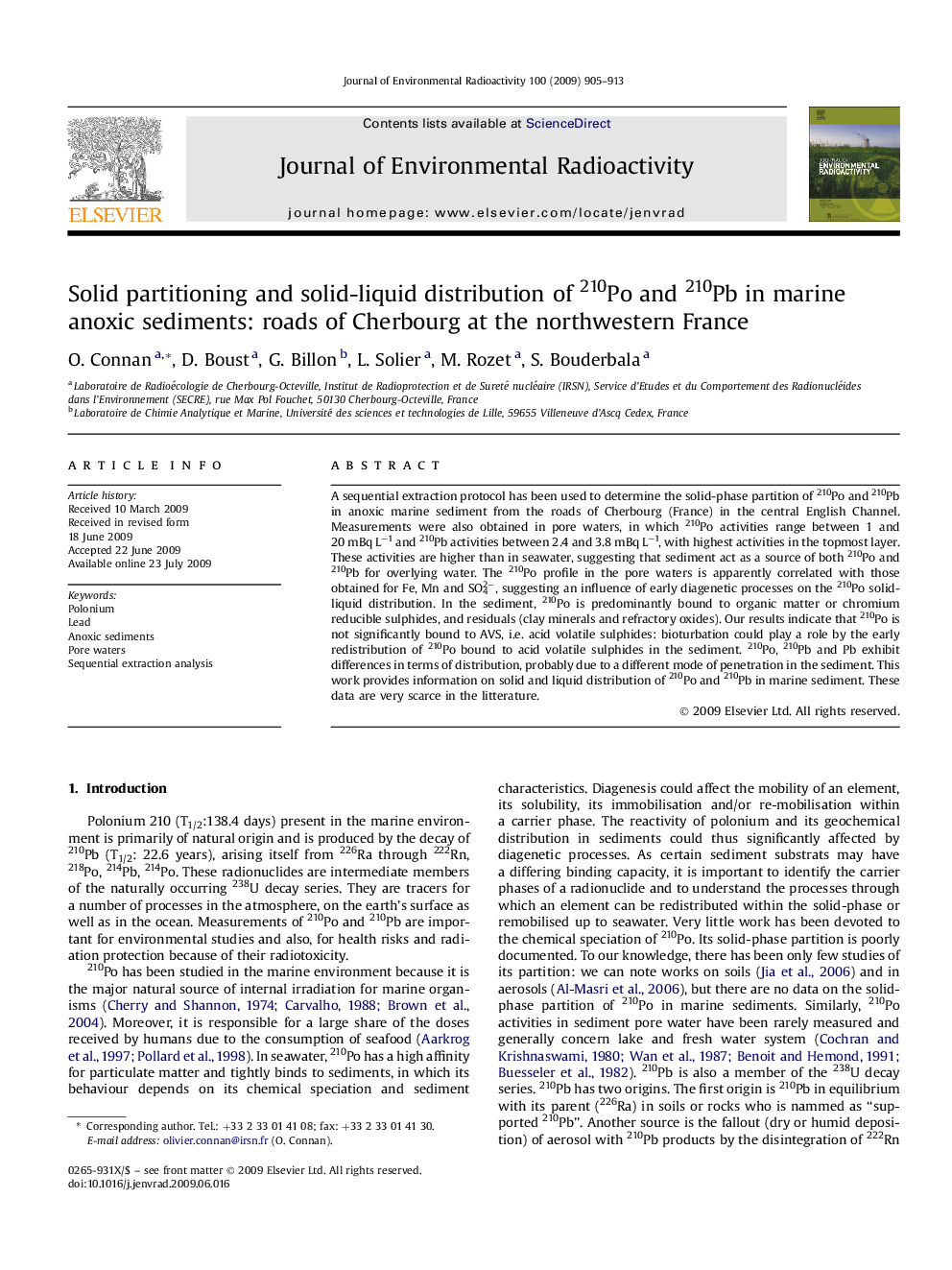| Article ID | Journal | Published Year | Pages | File Type |
|---|---|---|---|---|
| 1738990 | Journal of Environmental Radioactivity | 2009 | 9 Pages |
A sequential extraction protocol has been used to determine the solid-phase partition of 210Po and 210Pb in anoxic marine sediment from the roads of Cherbourg (France) in the central English Channel. Measurements were also obtained in pore waters, in which 210Po activities range between 1 and 20 mBq L−1 and 210Pb activities between 2.4 and 3.8 mBq L−1, with highest activities in the topmost layer. These activities are higher than in seawater, suggesting that sediment act as a source of both 210Po and 210Pb for overlying water. The 210Po profile in the pore waters is apparently correlated with those obtained for Fe, Mn and SO42−, suggesting an influence of early diagenetic processes on the 210Po solid-liquid distribution. In the sediment, 210Po is predominantly bound to organic matter or chromium reducible sulphides, and residuals (clay minerals and refractory oxides). Our results indicate that 210Po is not significantly bound to AVS, i.e. acid volatile sulphides: bioturbation could play a role by the early redistribution of 210Po bound to acid volatile sulphides in the sediment. 210Po, 210Pb and Pb exhibit differences in terms of distribution, probably due to a different mode of penetration in the sediment. This work provides information on solid and liquid distribution of 210Po and 210Pb in marine sediment. These data are very scarce in the litterature.
